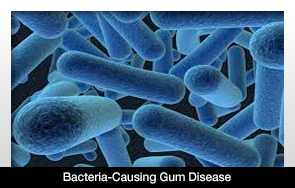 |
Chief Executive of the British Dental Health Foundation, Dr. Nigel Carter, issued new fears following a study that suggested the prevalence of periodontal disease in the US may have been underestimated by as much as 50 percent.
“The study shows that gum disease is a bigger problem than we previously thought and although this news comes from across the Atlantic, it could well apply to us here in the UK as well,” Dr. Carter said. “In this instance, the best course of action would be one of caution, given what is understood about the links between gum disease and other systemic links such as heart disease, strokes, diabetes and pre-term births.
“It all means that the relationship between gum disease and other related illnesses now becomes even more critical, in light of these new findings. In order to better understand the full extent and characteristics of periodontal disease in the UK a full and comprehensive study needs to be carried out on our adult population.”
The research was conducted as part of a National Health and Nutrition Examination Survey (NHANES), which involved a full-mouth and comprehensive periodontal examination. More than 450 American adults over the age of 35 were tested.
Results were then compared against previous NHANES studies that used a partial-mouth periodontal examination. The pilot study found that the original partial-mouth study may have underestimated true disease prevalence by up to 50 percent.
Periodontal disease describes an inflammation or infection of the tissues supporting the teeth. In early stages the gums around the teeth can become very red and swollen and often bleed when they are brushed but in later stages the disease is largely symptomless.
If left untreated, it can lead to tooth loss, and may also interfere with other systems of the body.
All gum disease is caused by plaque, which is a film of bacteria that forms on the surface of the teeth and gums every day. Many of the bacteria in plaque are completely harmless, but there are some that have been shown to be the main cause of gum disease.
Dr Carter added: “To prevent and treat gum disease, you need to make sure you remove all the plaque from your teeth every day. This is done by brushing for two minutes twice a day, morning and night with fluoride toothpaste, as well as using interdental brushes or floss to clean in between teeth where both gum disease and dental decay start. Regular visits to the dentist for a thorough check-up are also a necessity.
“If your gums do start to bleed, this is a sign that you may have not been cleaning well enough, so increase your toothbrushing. If things do not settle within a few days, get along to the dentist for an immediate dental examination. The dentist can measure the ‘cuff’ of gum around each tooth to see if there is any sign that periodontal disease has started. X-rays may also be needed to see the amount of bone that has been lost. This assessment is very important, so the correct treatment can be prescribed for you.”
 |










